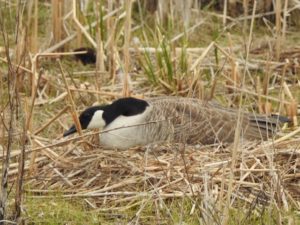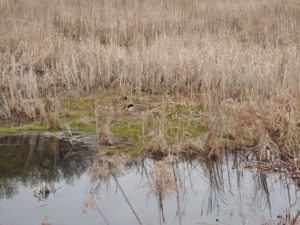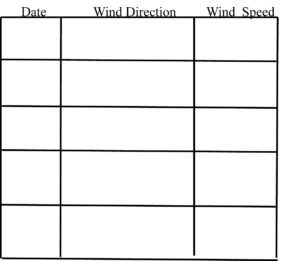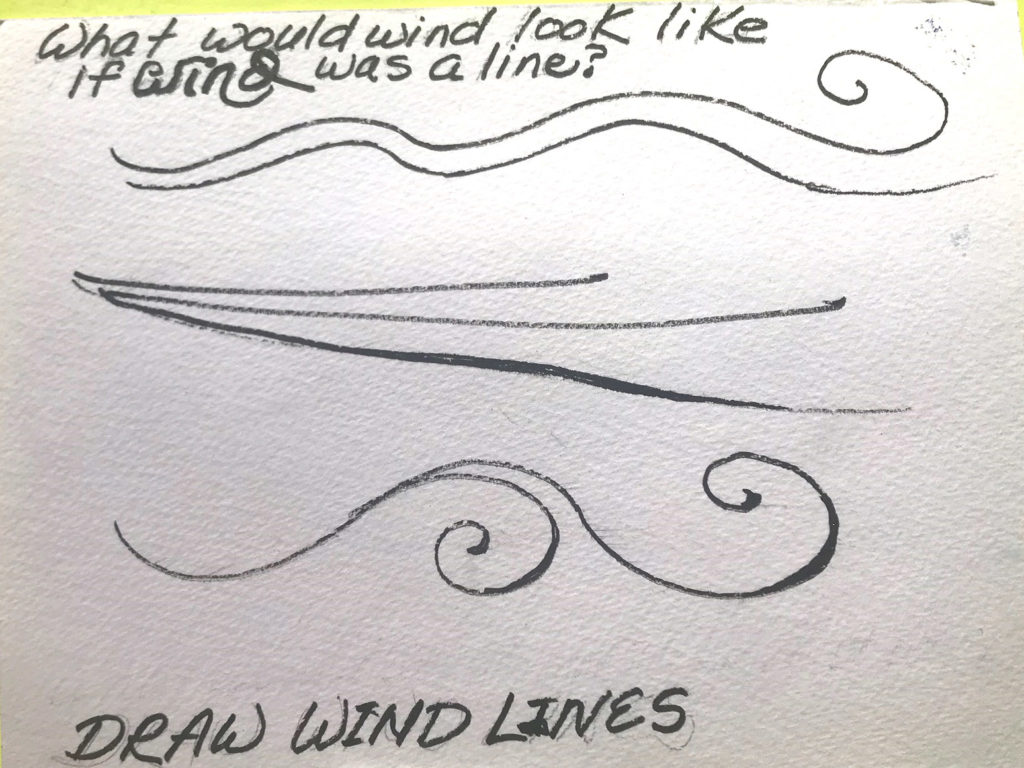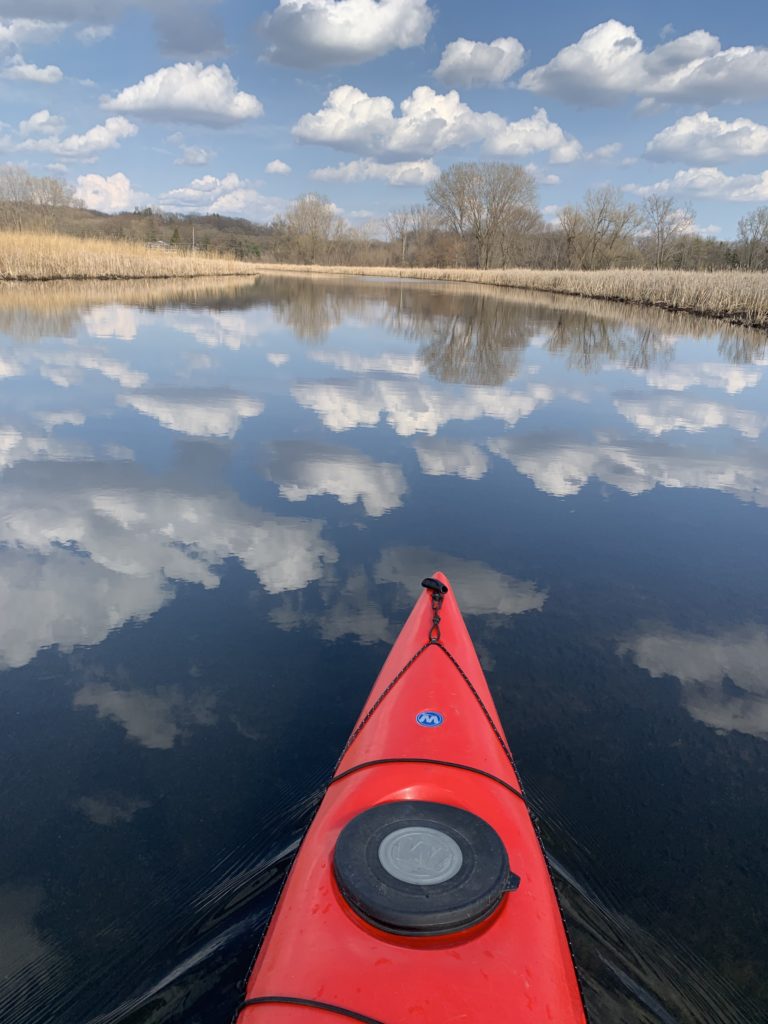 Photo by Jeremy Hahn, a 4th grade teacher at Gatewood School (April 25).
Photo by Jeremy Hahn, a 4th grade teacher at Gatewood School (April 25).
Mr. Hahn describes how he felt after seeing a snapping turtle from his kayak. He then offers a wise quote from Frank Lloyd Wright.
“It is always amazing to see wildlife in their natural element. As I floated past the snapping turtle, I felt grateful to be in that place. It brought a moment of peace and quiet in an otherwise stressful time.”
“Study nature, love nature, stay close to nature. It will never fail you.” – Frank Lloyd Wright
This week in a nut shell:
1. Test Your Nature IQ
2. Which way is the wind blowing?
3. Art and Nature with Karen Anderson
4. Twenty-Minute Hike – Nature Poetry
5. View the Decomposer program
6. Download the Decomposer chart
7. Sing along with the Decomposer Song
Request! I am going to do a special posting on the Old Naturalist website called “The Best of Nature School.” Send me your observations, drawings, photos, poetry or stories of what you experienced. Tell me your age and school (if you are old, you are exempt from sharing your age and school).
Did you miss any of the first six weeks of Nature School? Click here to see links to the previous lessons.
Safety Alert – “Watch out for Ticks” Song
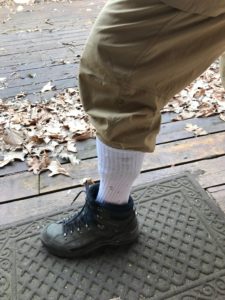 Ticks are out
Ticks are out
Got to watch out!
Walking paths – Yes
Deer trails – No
You’ll find ticks
in tall grass.
So
Pull your socks over your pant leg.
Look for ticks crawling up.
Tick check – Tick check
Several times.
When you’re home
Check again.
Cindy Eyden came up with the idea for this song.
Thanks to Janine Pung for all the extra time she took editing this post. Thanks to Karen Anderson, Mark Storck, Stephen Bolles, Heather Holm, Jeremy Hahn and Cindy Eyden for contributing to Nature School this week.
1. Test Your Nature IQ
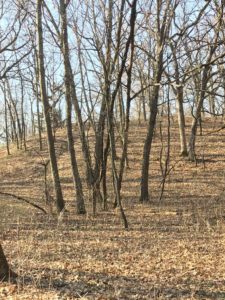 a. How were most hills in Minnesota formed?
a. How were most hills in Minnesota formed?
This is a glacial hill and was formed 15,000 years ago when the glacier melted. All of the rocks, sand and dirt that were inside the glacier formed the hill.
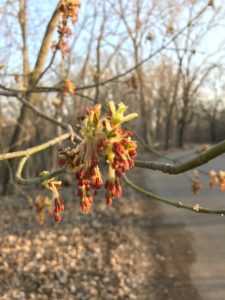 b. What are the reddish objects in the picture and why are they important?
b. What are the reddish objects in the picture and why are they important?
Those are tree flowers. Early spring bees are dependent upon tree flowers for pollination. If the flowers are pollinated, the trees can then form seeds.
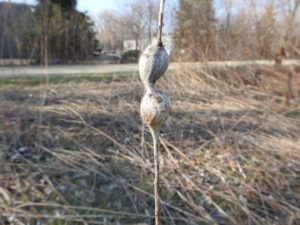 c. What are the two oval shaped objects on the stem?
c. What are the two oval shaped objects on the stem?
Those are Goldenrod galls. They were formed when a gall fly laid its egg on the stem of a goldenrod plant. The gall formed around the egg. A small larva hatched inside gall and lived there all winter. The larva metamorphosed into an adult fly in the spring.
d. What is the significant object in the photo on the left?
A Canada Goose on its nest.
Cindy Eyden came up with the idea for this question.
2. Which Way is the Wind Blowing?
In this activity, you are going to learn about wind direction and speed. Here in Minnesota, our prevailing wind is the northwest wind (this wind comes from the northwest). Another common wind is the southeast wind (this wind comes from the Southeast).
How to Estimate Wind Speed
Observation Wind Speed
Only leaves on trees are moving 8-12 mph
Small branches are moving on trees 13-18 mph
Entire small trees are swaying 19-24 mph
Large branches on large trees are moving 25-31 mph
What to do:
a. Find a location that is open to the full force of the wind. Face directly into the wind.
b. Use a compass or the compass on a phone to determine wind direction.
c. Determine wind speed by using the chart above.
d. To download the weather chart (below), click here.
e. Fill out the weather chart in your nature notebook for at least five days.
Questions to answer in your notebook:
a. What type of weather did you observe when there was a NW wind?
b. What type of weather did you observe when there was a SE wind?
Cindy Eyden offered support in creating this activity.
3. Art and Nature with Karen Anderson
Our artist in residence, Karen Anderson, continues our drawing lessons. This week she shows you her concept for drawing the wind.
What to do:
a. Practice the wind drawings in your nature notebook by using Karen’s handout, “Wind Lines.”
b. Karen says, “It might be fun to paint or color your wind. Is it a dry hot wind or a cool breeze? Think about what colors would work.”
b. To download and print “Wind Lines” (below): click here.
4. Twenty-Minute Hike – Nature Poetry
This week’s twenty-minute hike is a poetry hike. The title of your poem is “Where Does Beauty Hide?”
What to do:
a. Take five, calming breaths. Breathe in through your nose and out through your mouth.
b. Hike slowly along a trail, looking for objects or shapes in nature that you think are beautiful and write them down.
c. You will be writing an anaphora poem. This type of poem has a repeating line that is used for emphasis. In this poem, the repeating line is “Where does beauty hide?”
d. Example:
Where does beauty hide?
In the droplets of dew on the leaves
In the gnarled bark of an oak
Where does beauty hide?
In an owl feather on the grass
In the warmth of the sun
Where does beauty hide?
e. Click here to download the poetry form below. Put it into your nature notebook.
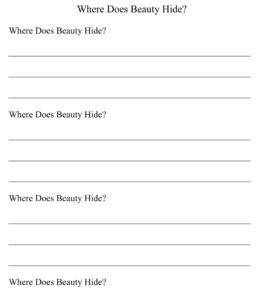
5. Decomposer Program
What to do:
a. In this activity, you will watch the program on decomposers.
b. Answer the following questions in your nature notebook:
1. What is a decomposer?
2. What is compost?
3. What are the four stages of a worm’s life cycle?
c. Click here to see the Decomposer Program.
6. Looking for Decomposers
A lot of people don’t like decomposers, but they have an important job to do in nature. They breakdown things that have died and create nutrients for plants and trees.
Caution: If you find a centipede, don’t pick it up. They have pinchers. However, check it out because they are very interesting to study.
What to do:
a. Download and print the decomposer page (see link below).
b. Look for decomposers under rocks, logs, and in piles of leaves. In order to protect the creatures, please remember to put back rocks and logs that have been moved.
c. Check off the decomposers you see this week and in the coming weeks.
d. Write a paragraph in your nature notebook about what discoveries you made. Make a sketch of an animal you saw.
To download and print the page below, click here. Put the page in your nature notebook.
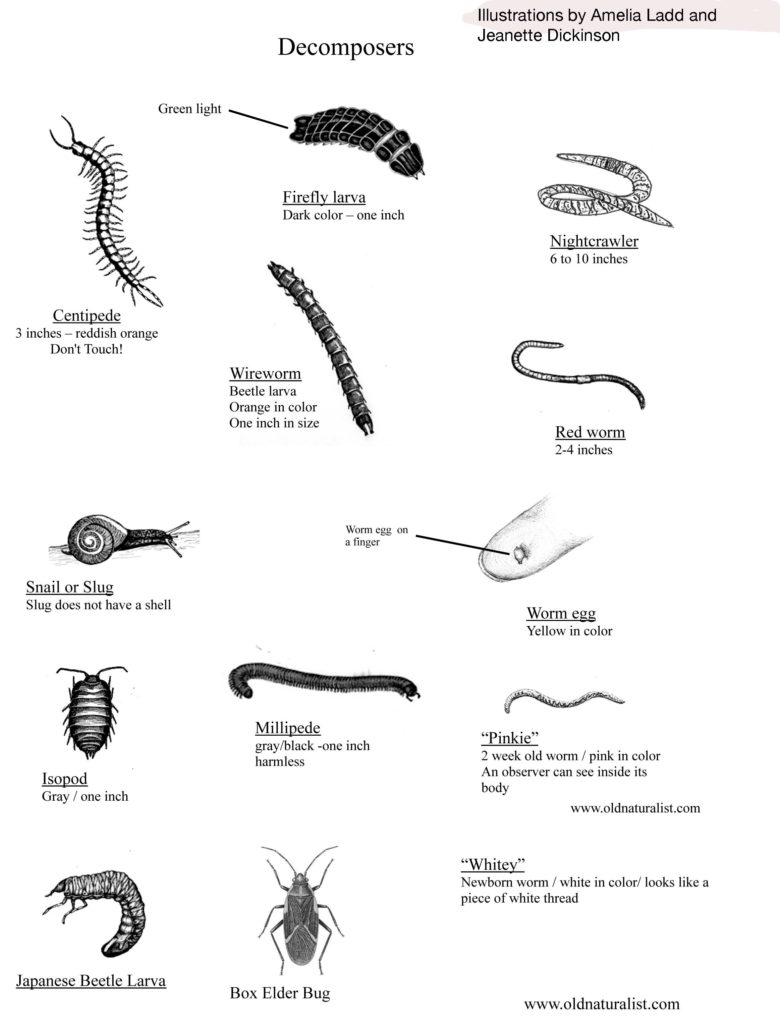 7. World debut of the Decomposer Song
7. World debut of the Decomposer Song
This song was originally titled “Earthworm Jack.” However, in the last few years, scientists have learned that earthworms eat the leaf layer in the forest and actually harm trees. I decided to switch the name of the song to “Decomposers.”
To listen to the song, click here:
Sing along using the lyrics below or play the song with the guitar chords shown.
Decomposer Song
C Em F G
Decomposers have a lot to do
C Em F G
Their friends in the forest love them too.
C Em F G
Chews the leaves that fall on the ground
C Em F G C
Making rich soil for the trees to be tall.
F C F C
Decomposers you may be small,
F C F G C
Decomposers help the trees grow tall.
F C F C
Decomposers you’re important to me
F C F G C
Decomposers as busy as a bee.

